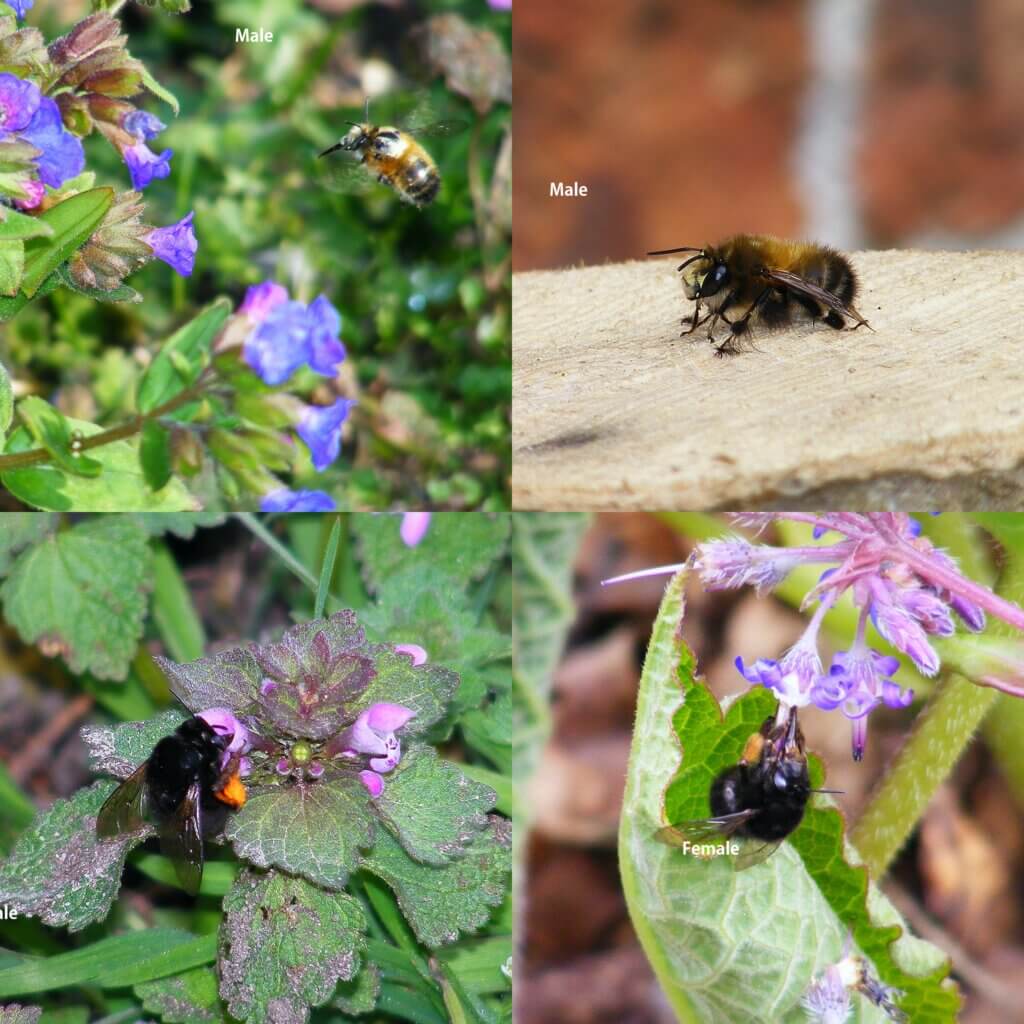
Jane is a naturalist, photographer and nature writer living in Dorset. Her work has appeared in books, anthologies and blogs for charities such as The Wildlife Trusts and the International Bee Research Association. When she’s not exploring Dorset’s lanes and countryside she can be found lying on her stomach watching insects in her garden. Jane is currently studying for an MA in Travel and Nature Writing at Bath Spa University and can be found: www.janevadams.com and on Twitter @WildlifeStuff

I thought someone was having a laugh when I first heard about the feather-footed flower bee. At the time I was new to identifying bees and assumed it was one of those gullible trainee pranks… “haven’t you seen the feather-footed flower bee yet, Jane?” (with much sniggering behind hands). I still hadn’t forgiven my grandad for the hours I’d spent searching for a left-handed screwdriver when I was a kid.
Then I saw it. It was the end of March 2010, and, what I presumed was a ginger-coloured bumblebee had just landed on a daffodil in the garden. It was one of the first bumbles I’d seen that year and I dived in with my camera to take a photo. But this wasn’t a bumblebee. This weird looking insect had long, luxuriant hairs poking from its middle legs, and I realised it had to be a male feather-footed flower bee, Anthophora plumipes. Plumipes from the Latin for feathered or winged feet.
I now look forward to spotting it each spring, as it’s one of the first solitary bees on the wing (and can sometimes be seen until the end of May). More numerous in the south, they’re gradually buzzing up through the Midlands, and further north. Ginger males with yellow faces and feathery legs can often be seen from the beginning of March, feeding on a range of flowers from borage to daffodils and primroses to wallflowers. And, as it possesses a long tongue, if you plant lungwort (Pulmonaria sp) you stand a good chance of tempting a male into your garden. Then you can watch as it buzzes loudly and hovers over your newly planted flower bed, waiting for a female and head-butting any other insect – or human – that dares to venture too close.
Just to confuse matters, the female looks completely different. Still bumblebee-esque in size, she’s jet-black except for yellow/orange hairs on her back legs (unlike the male, hers are not feathery hairs), and she’s especially fond of nesting in individual cavities within old cob walls, walls with soft mortar, and sunny vertical cliffs and the sides of quarries.
Nowadays, you’re more likely to hear people refer to them as the hairy-footed, rather than feather-footed, flower bee. But why does the male have those hairs? There are several theories, one being that he covers the flighty-female’s eyes to calm her down while mating. Feathery-feet over your eyes… or hairy-feet? I’ll let you choose. I know which one I’d prefer.

More Information:
More photographs by Steven Falk: https://www.flickr.com/photos/63075200@N07/albums/72157633009633307/
BWARS information sheet: https://bwars.com/sites/www.bwars.com/files/info_sheets/05_Anthophora_plumipes_1col_infosheet.pdf
Submit a sighting: https://www.bwars.com/content/submit-sighting-anthophora-plumipes-hairy-footed-flower-bee
[registration_form]
Fabulous.
The rarest bee we have is Dasypoda hirtipes (Pantaloon Bee) – A Nationally scarce B species.
The female has extended long hairs (pollen brushes) on the hind legs, a very attractive bee, hopefully around again from June. Another good reason to leave ragwort alone.
Delightful, Jane.
I have spent today in the peace and quiet of my garden enjoying the prolific insect life and trying to identify as many of the ‘players’ as possible with the aid of a close focussing pair of binoculars. Bee Fly on the primroses were the easiest but others were more challenging. However, definitely time well spent.